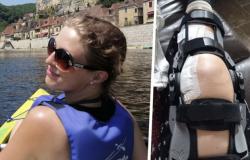The two Finnish companies DA Group and Forcit offer Belgium their sea mines. Spokespersons for both companies told MarineShips.nl about this.
A Finnish NH-90 helicopter took part in a minelaying exercise in the northern Baltic Sea this week. (Photo: Finnish Navy)
Earlier this year it was announced that the Belgian navy is planning to acquire a minelaying capacity. A rather unexpected decision and little else has been reported about it by the Belgian Defence. Well-known sea mines include the German-Italian Manta mine and the Swedish Rockan. But sea mines are also produced and exported in Finland. Last year, Estonia ordered another, it claims, significant number of Blocker sea mines from Forcit.
The naval mine from DA Group’s Turso family is the MM30. They are different systems, but they do creep towards each other. In September 2021, the two Finnish companies announced their intention to work together in the field of sea mines. The Blocker from Forcit will receive the electronics from the DA Group and the Turso mine family will be supplied with explosives from Forcit.
It is not known how Belgium intends to be able to lay the mines, but that can be done by ships equipped with minelaying rails or with a crane, it is also possible to lay mines from a helicopter. The Finnish Defense yesterday showed images of an NH-90 helicopter laying Blocker mines. Both sea mines are standard equipped with a chassis with wheels.
MM30
The MM30 was introduced in 2020 and is an advanced influence mine; the mine explodes as soon as the sensors detect a suitable target. That is different from a contact mine, such a system detonates as soon as a ship hits the mine.
As an influence mine, the MM30 has numerous sensors: a magnetic sensor to detect the magnetic field of a ship (or submarine), a pressure sensor that detects the pressure of a ship, hydrophones that pick up the sound of ships so that ships can be recognized and it can be determined whether the target is sailing close enough, a sensor (UEP) that can detect a ship’s electric field and a light sensor. The light sensor is intended to receive flashlights from divers (who want to defuse the mine) or drones. Hunting these mines has therefore become a lot more difficult, and sweeping is not easy either. The UEP sensor can distinguish between a real ship and a sweeping tool that must use a large amount of energy to mimic targets.
blocker
The other Finnish mine is the Blocker, or PM16 as it is called within the Finnish armed forces. This mine has a life of 25 years when stored and will continue to operate for 2 years once the mine is placed in the water. This is possible to a depth of up to 200 meters.
The Blocker is also an influence mine and has multiple sensors. Basically these are the magnetic sensor, pressure sensor and acoustic sensor. The light sensor is optional.
The Blocker was introduced in 2015.
deterrence
Twelve pieces of both the Blocker and the MM30 fit in a Sumico container. This container can be connected to the combat management system of the ship that is going to lay the mines, so that the mines can be programmed. The Blocker has a so-called hazard classification which, a Forcit spokesperson said, allows the mines to be stored close to each other.
Both mines are plastic, but are not stealth mines. According to Forcit, they are mainly used as a deterrent and it is usually the intention that a potential opponent knows that mines have been laid.
Although Belgium and the Netherlands work closely together in the field of mine action and often have the same platforms at their disposal, the Dutch navy has not yet made anything public about a possible Dutch minelaying capacity.
Please enable JavaScript to view the comments powered by Disqus.
comments powered by






